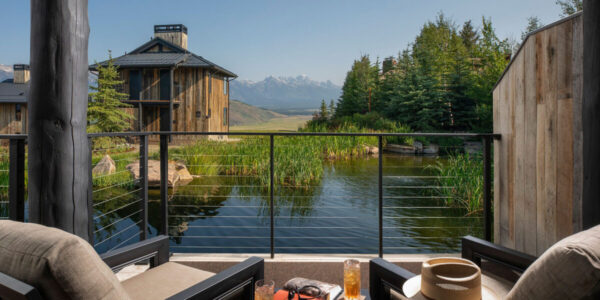
Small-lot orchard
Here’s a riddle: How do you fit an entire orchard of 24 fruit trees into a small San Francisco garden? For landscape designer Stephen Suzman, the answer is simple: Espalier the trees on an arched iron arbor, 6 feet wide by 56 feet long across the back of the garden.
Suzman, inspired by the works of English landscape designer Gertrude Jekyll, developed the structure (with designer John Dorr) as a support system for the trees―spaced 8 feet apart―and as a leafy tunnel for the owners’ two small children to explore. Despite the lack of winter cold, six types of apples thrive here, ‘Cox’s Orange Pippin’, ‘Fuji’, ‘Lady’, ‘McIntosh’ (‘MacSpur McIntosh’), ‘Pink Pearl’, ‘Red Astrachan’, plus crabapple and two Asian pears. “We chose mostly heirloom varieties with a low chill requirement, because they’re so much more interesting to grow,” says Suzman. “‘Pink Pearl’ is lovely just to look at.”
Before planting the young fruit trees (which were purchased as 4-foot-tall espaliers), Suzman first had to overcome a severe soil drainage problem. To correct it, the top 2 1/2 feet of soil were removed, then a drainage system was installed and covered with new topsoil.
The trees produce a bountiful harvest, and the handsome arbor provides interest through the seasons.
How to care for an espalier
Landscape gardener Hilary Gordon has been caring for the tunnel of trees since 1992. Her approach is simple: Feed, thin, prune, and water regularly, and the trees will reward you with baskets of fruit starting in midsummer.
FERTILIZING
Gordon applies Whitney Farms organic Rose & Flower Food three times a year.
Late winter, before blossoms open. To make the soil more alkaline, she also applies lime around the base of each tree, 6 inches away from the trunk.
Late spring, when fruit are setting.
Summer, when fruit are maturing.
PRUNING AND TYING
During the dormant season (late December in San Francisco), Gordon prunes the trees for shape and to open up the top of the espalier so that sunlight and air can reach the inside of the tunnel; in addition, she cuts off any errant branches.
As the branches grow, she secures them to the arbor with bonsai wire.
In summer, she prunes lightly but frequently to remove suckers and maintain the trees’ flat profile.
THINNING
To increase fruit size and reduce quantity, some of the fruits need to be thinned out. (Gordon doesn’t thin ‘Lady’ apple, since the small clusters are very ornamental.)
In late spring, when fruits reach dime size, she thins them down to one fruit per every couple of inches of branch.
